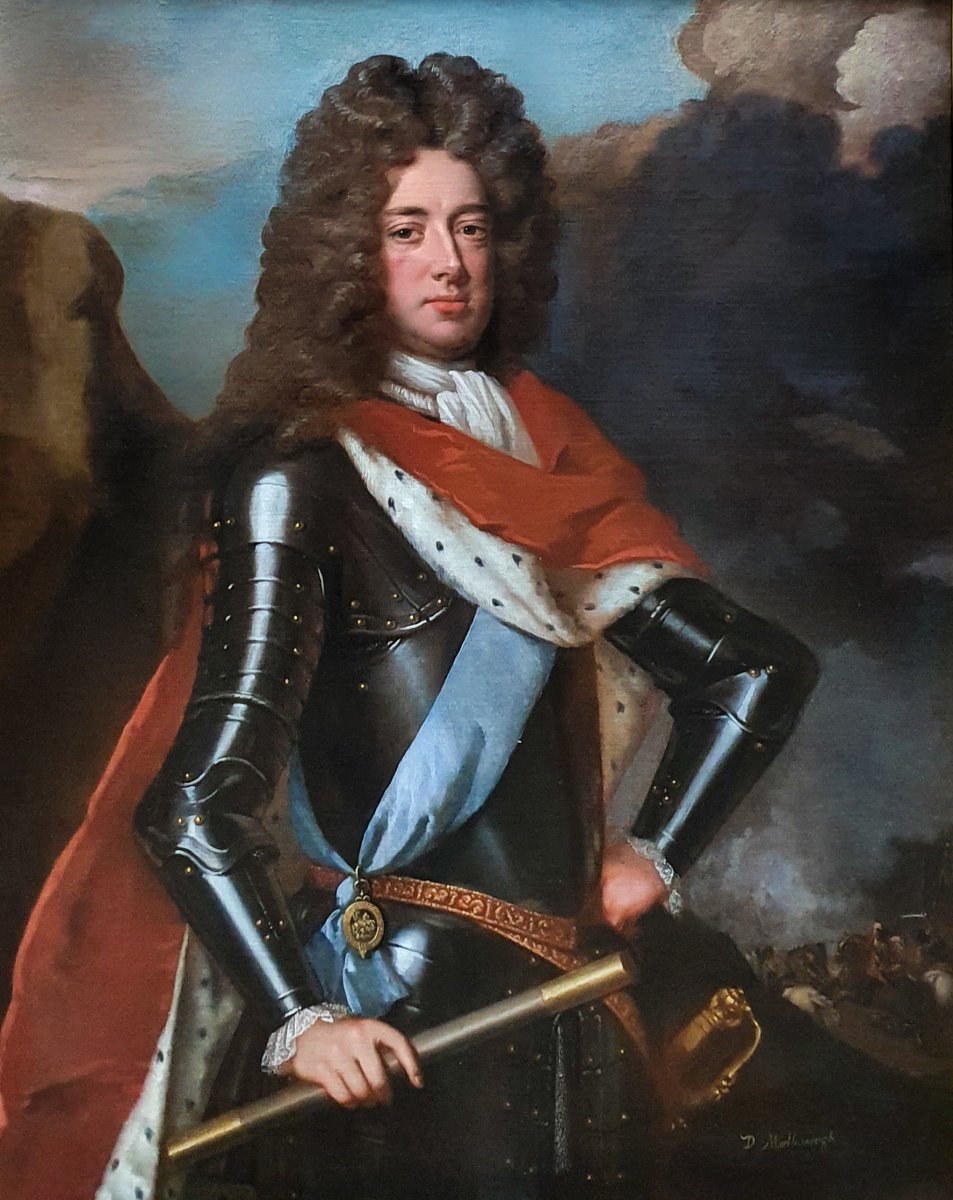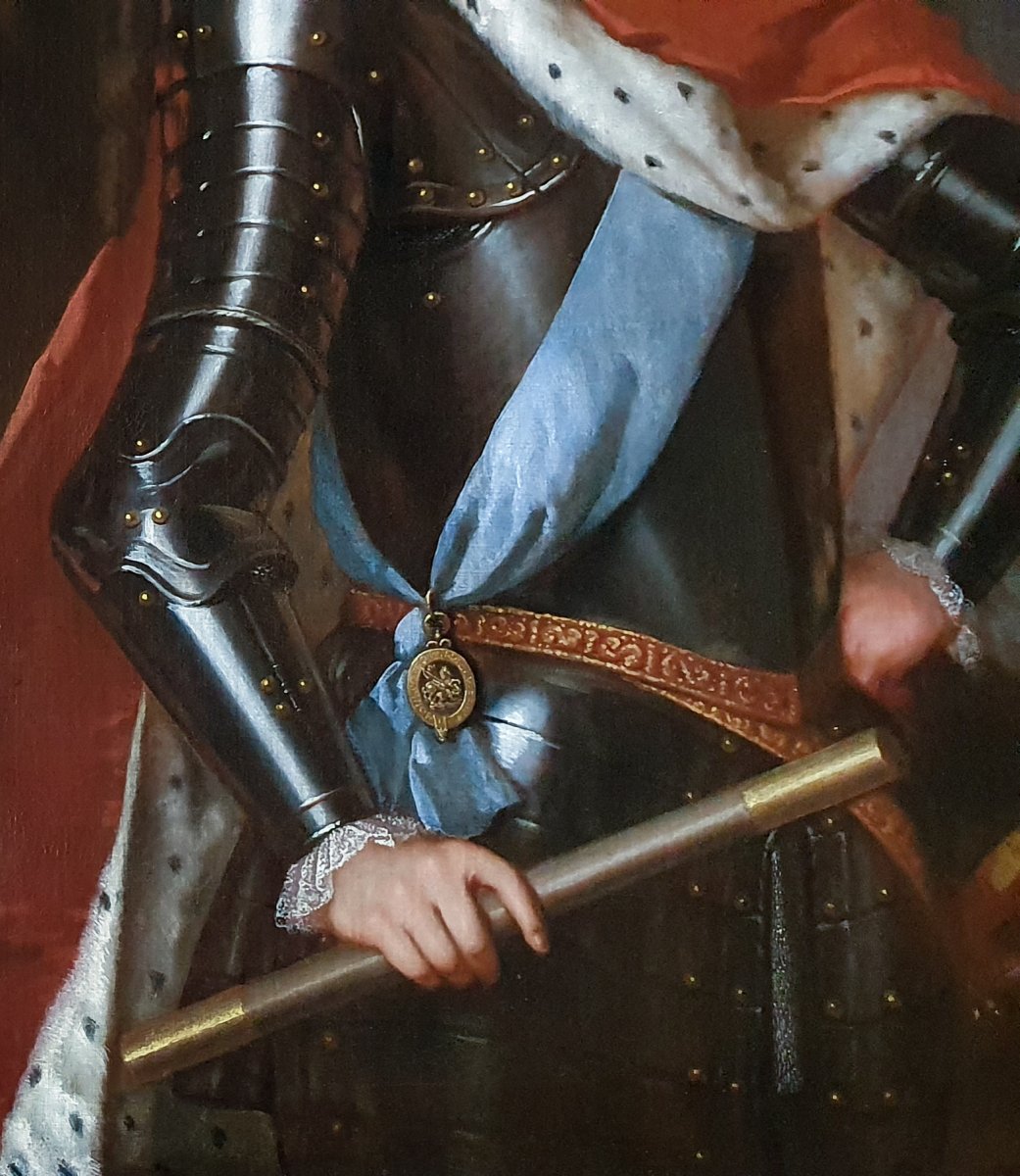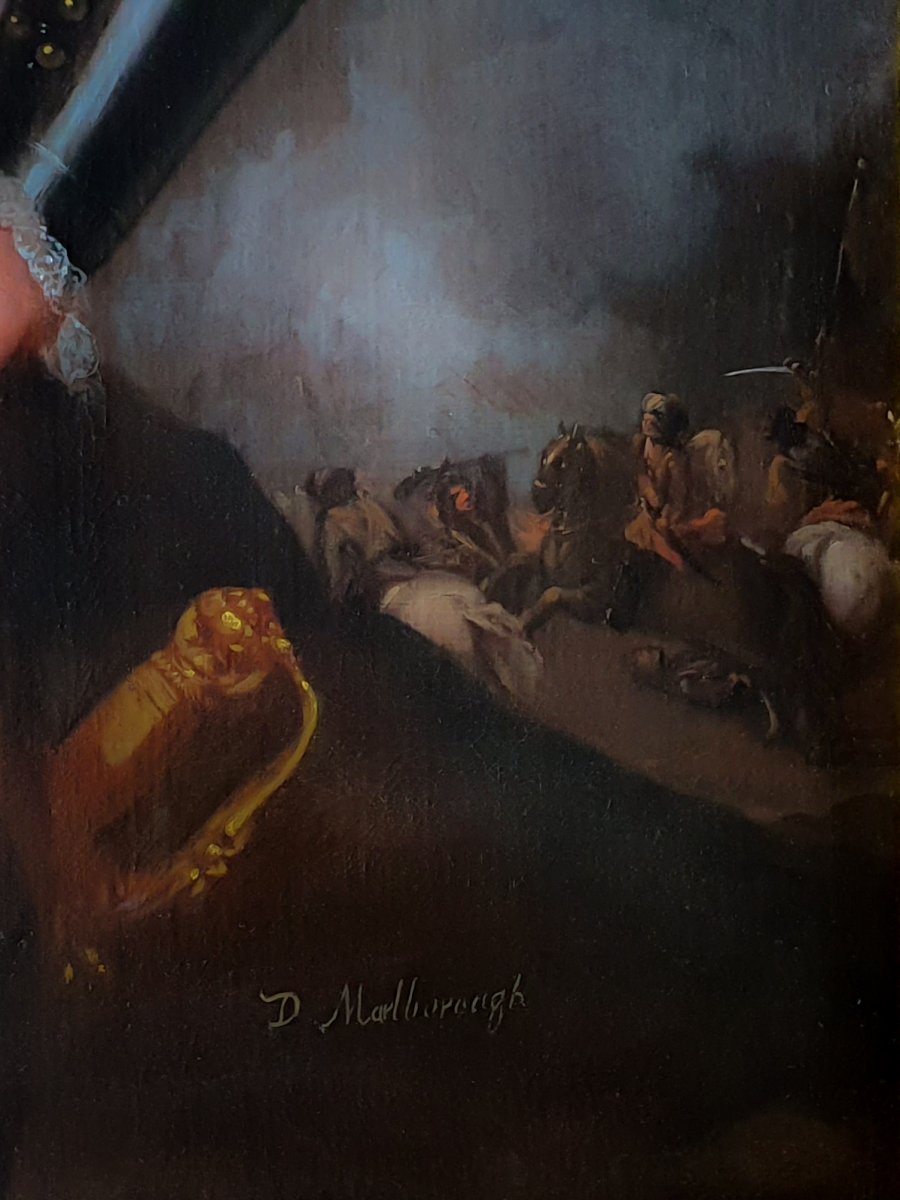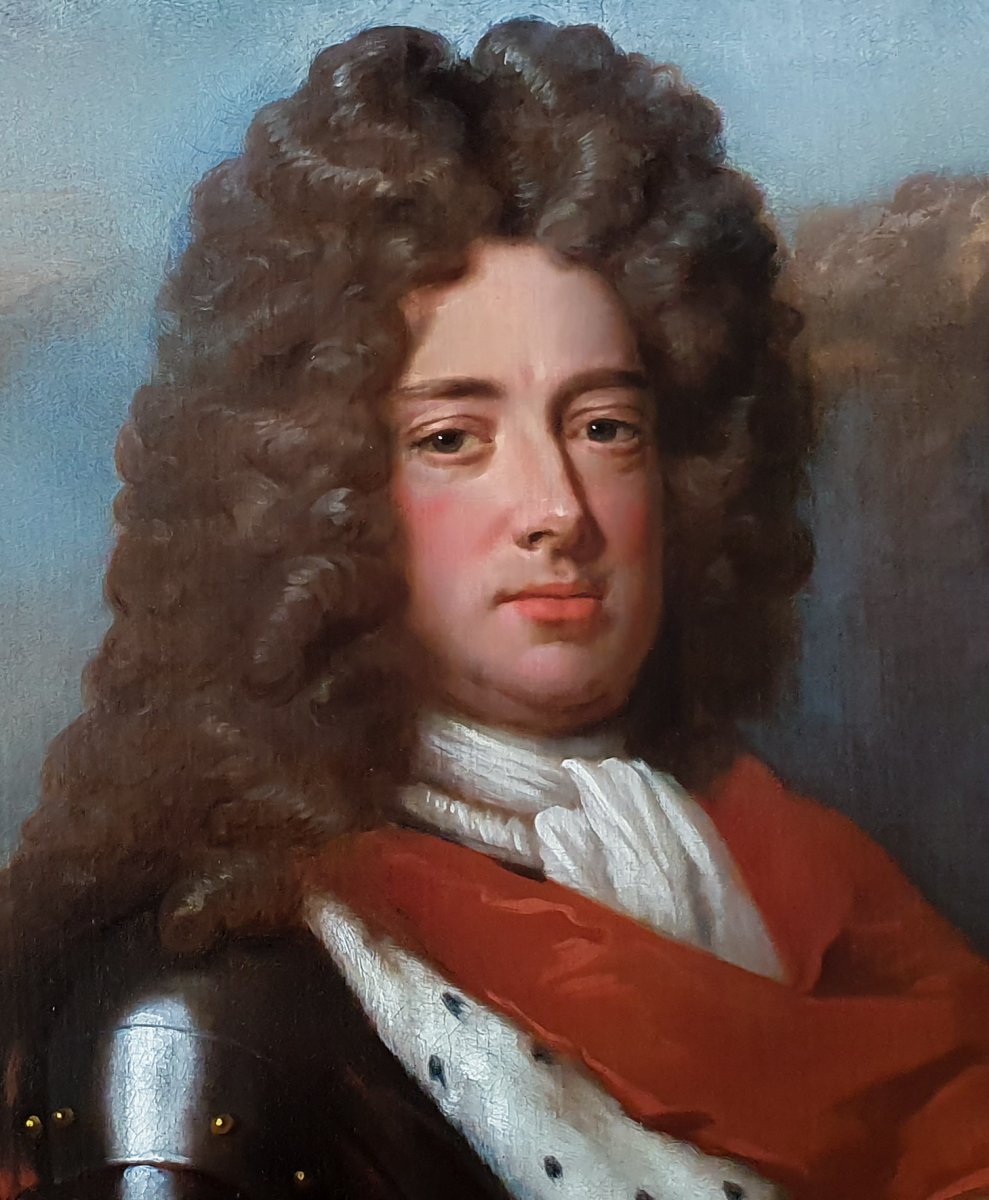"Portrait Of John Churchill, 1st Duke Of Marlborough (1650-1722) C1702 Studio Of Godfrey Kneller"
Portrait of John Churchill, 1st Duke of Marlborough (1650-1722) c.1702Studio of Sir Godfrey Kneller (1646-1723)
This exquisite work was once at the moated Elizabethan manor Badmondisfield Hall, thought to have been built by Sir George Somerset (died 1559) when he was in possession (the estate itself is much older and was recorded in the Domesday Book as a substantial royal manor)
The sitter in this exquisite large-scale portrait is John Churchill, 1st Duke of Marlborough, 1st Prince of Mindelheim, 1st Count of Nellenburg, Prince of the Holy Roman Empire. Churchill was one of the greatest military commanders in history, and was a statesman whose career spanned the reigns of five monarchs. As de facto leader of Allied forces in the Low Countries, his victories at Blenheim (1704), Ramillies (1706), Oudenarde (1708), and Malplaquet (1709), ensured his place in history as one of Europe's great generals. From a gentry family, he served first as a page at the court of the House of Stuart under James, Duke of York, through the 1670s and early 1680s, earning military and political advancement through his courage and diplomatic skill.
Painted circa 1700, portrayed in armour and a magnificent crimson and ermine trimmed cloak, holding a baton of command, his heroic visage suitably reflects his wealth and status; in the England of the days of his youth, soldiering was a profession. The gold badge of the Most Noble Order of the Garter is worn suspended from a small gold link from the blue sash at the right hip (sometimes known as "the Lesser George") – it shows St. George the Martyr on horseback slaying a dragon. This order of chivalry founded by Edward III of England in 1348 is the most senior order of knighthood in the British honours system, and is dedicated to the image and arms of Saint George, England's patron saint. Appointments are made at the Sovereign's sole discretion and membership of the Order is limited to the Sovereign, the Prince of Wales, and no more than 24 living members, or Companions.
The overriding sense of the painting is motion, and even with his dignified restraint, the figure of the Duke raising his baton of command echoes the swirling drama of the battlefield in the background – a common setting in portraits for important sitters at the time. It is not hard to understand why everyone and anyone who was of some standing in society commissioned Kneller for their portrait.
Around 1702 Kneller and his studio painted more than one variant of this portrait - as was common at the time – the key differences are in the robe and the background. One version was in the possession of the Hudson’s Bay Company (Marlborough was Governor of the firm) and was exhibited in London in 1934 at Chesterfield House. There is a close version attributed to Michael Dahl (c.1659-1743) circa 1702 in the National Army Museum London (NAM Accession Number 2000-06-146-1) believed to have been acquired at Christies London 6 June 2000 (lot 13, for £24,675). Our version appears to be unique in that it appears to be the only version with the particular placement of the robe.
Born in 1650, John Churchill was the second but oldest surviving son of Sir Winston Churchill (1620–1688) of Glanvilles Wootton, Dorset and Elizabeth Drake, whose family came from Ash, in Devon. In 1688 John Churchill supported William III when William invaded and took the throne from James II. For his loyalty, William elevated John from the lowest rank of the peerage to that of Earl of Marlborough. However, John was a key player in the military conspiracy that led to James being deposed during the Glorious Revolution. Persistent charges of Jacobitism led to his fall from office and temporary imprisonment in the Tower of London. William recognised his abilities by appointing him as his deputy in Flanders before the War of the Spanish Succession in 1701 but it was not until the accession of Queen Anne in 1702, he secured his fame and fortune. Marriage to Sarah Jennings and her relationship with Anne ensured Marlborough's rise, first to the Captain-Generalcy of British forces, then to a dukedom.
His wife's stormy relationship with the Queen, and her subsequent dismissal from court, was central to his own fall. Incurring Anne's disfavour, and caught between Tory and Whig factions, Marlborough was forced from office and went into self-imposed exile. He returned to favour with the accession of George I to the British throne in 1714, but a stroke in 1716 ended his active career.
Marlborough's leadership of the Allied armies from 1701 to 1710 consolidated Britain's emergence as a front-rank power, while his ability to maintain unity demonstrated his diplomatic skills. He is often remembered by military historians as much for his organisational and logistic skills as tactical abilities. However, he was also instrumental in moving from the siege warfare that dominated the Nine Years' War, arguing one battle was worth ten sieges.
Blenheim Palace is a monumental country house in Woodstock, Oxfordshire, England (see photo). It is the principal residence of the Dukes of Marlborough, and the only non-royal, non-episcopal country house in England to hold the title of palace. The palace, one of England's largest houses, was built between 1705 and 1722, and designated a UNESCO World Heritage Site in 1987.
The palace is named for the 1704 Battle of Blenheim, and thus ultimately after Blindheim (also known as Blenheim) in Bavaria. It was originally intended to be a reward to John Churchill, 1st Duke of Marlborough for his military triumphs against the French and Bavarians in the War of the Spanish Succession, culminating in the Battle of Blenheim. The land was given as a gift, and construction began in 1705, with some financial support from Queen Anne. The project soon became the subject of political infighting, with the Crown cancelling further financial support in 1712, Marlborough's three-year voluntary exile to the Continent, the fall from influence of his duchy and lasting damage to the reputation of the architect Sir John Vanbrugh.
This exquisite grand manner work is an accomplished example. It is a marvellous and striking image of the type of portrait in vogue during the last part of the 17th century and early part of the 18th. Presented in its period gilded antique frame.
Sir Godfrey Kneller (1646-1723) was born in Germany but trained in Amsterdam and studied in Italy before moving to England in 1676. Towards the end of the century, after the deaths of Peter Lely and John Riley, Kneller became the leading portrait painter in Britain and the court painter to English and British monarchs from Charles II to George I. He dominated English art for more than thirty years and had an impact on British art for more than a century after his death. His over 40 "Kit-cat portraits" and the ten "beauties" of the court of William III are most noteworthy. He ran a large, busy and successful studio in London and employed many assistants thereby establishing a routine that enabled a great number of works to be produced. His name became synonymous with British portraiture at the time and he rose to great notoriety; and there were countless other artists that strove to emulate his style. He received a knighthood from the King, an honour that had never been given to an artist. He died of a fever in London in 1723 and a memorial was erected in Westminster Abbey.
Provenance: Badmondisfield Hall, Wickhambrook, Suffolk
Measurements: Height 146cm, Width 121cm framed (Height 57.5”, Width 47.75” framed



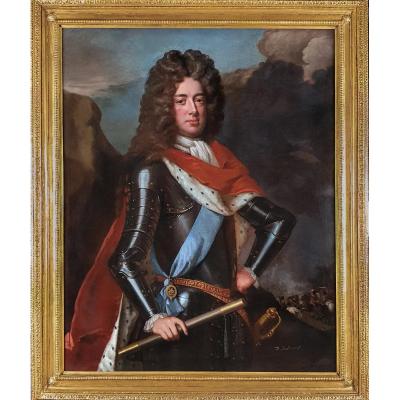

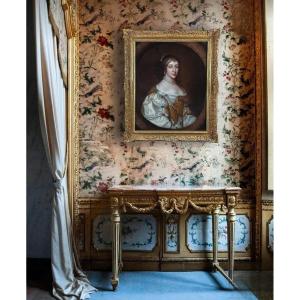
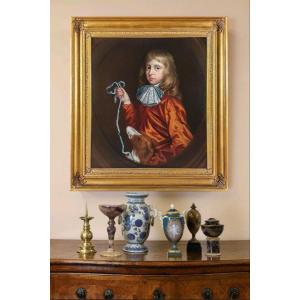



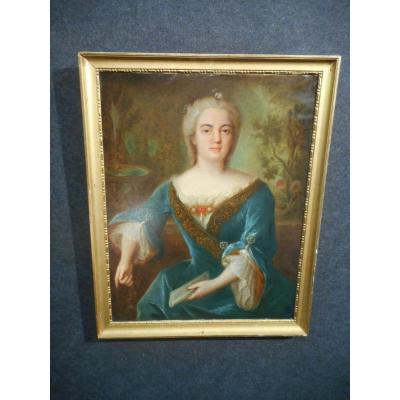

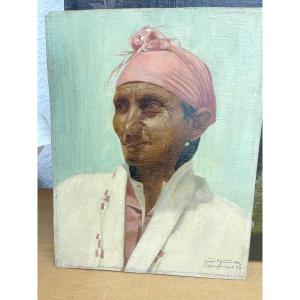
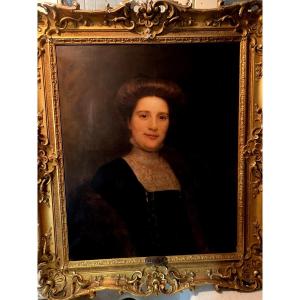
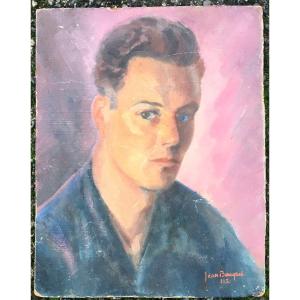





 Le Magazine
Le Magazine Rivista Artiquariato
Rivista Artiquariato TRÉSORS magazine
TRÉSORS magazine

